The Acer griseum, commonly known as the paperbark maple, is a small to medium-sized deciduous tree native to central China. It is most renowned for its striking cinnamon-colored, peeling bark that adds a unique visual appeal to landscapes, especially in winter months when its exfoliating bark stands out. This is a beautiful multi-season tree.
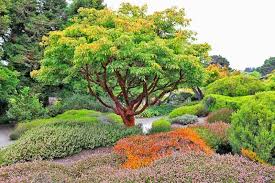
Key Features
Appearance:
- Size and Growth: It typically grows 20 to 30 feet tall with a similar spread, making it ideal for smaller gardens or as a specimen tree.
- Leaves: The leaves are a beautiful green during the growing season, turning vibrant red and orange in fall, adding to its seasonal interest.
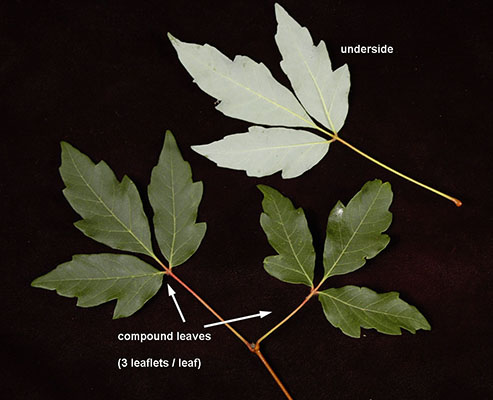
- Bark: The bark is the tree’s most distinct feature, peeling in thin, papery layers. The color can range from reddish-brown to cinnamon, making it an attractive feature in winter.
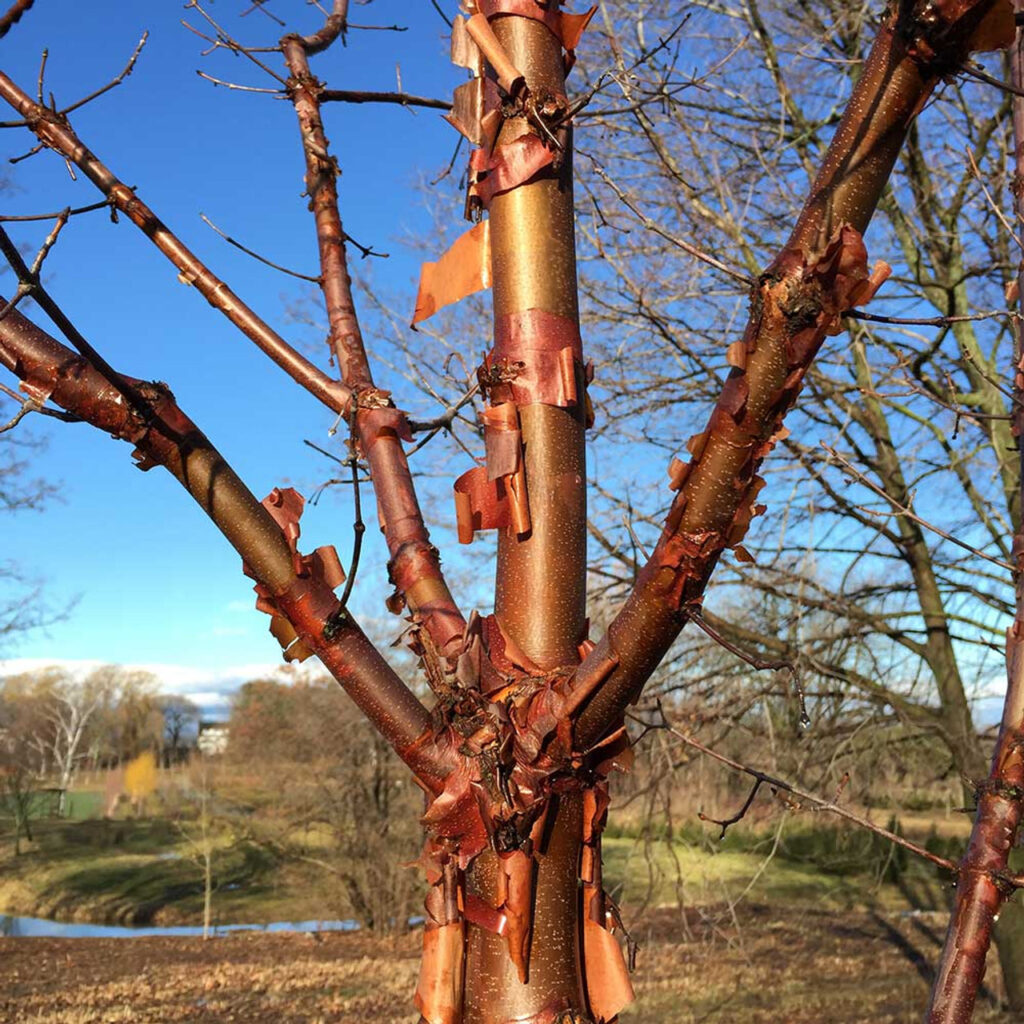
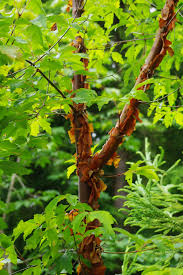
- Flowering and Fruit: It produces small, yellow-green flowers in spring, followed by winged samaras (seed pods).
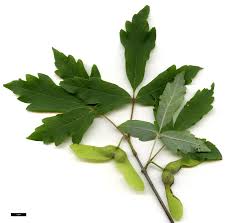
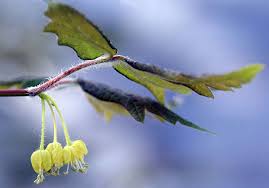
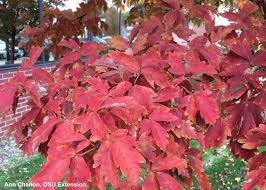
Fall foliage color!
Growing Conditions:
- Hardiness: The tree is hardy in USDA zones 4 to 8, meaning it can withstand cold temperatures and perform well in many temperate climates.
- Soil and Care: Acer griseum prefers slightly acidic, well-drained soil and does best in a sunny or partially shaded location. It is also somewhat drought-tolerant once established.
Uses :
This tree is a lovely ornamental choice for adding year-round interest to gardens and is especially appreciated for its winter appeal when other trees are bare.


